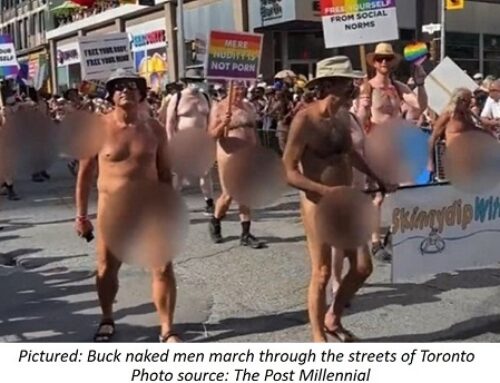The single, most powerful testimony against the gay agenda is the former homosexual. There is nothing like a fellow human being who says, “I once was, but no longer am.” We listen. These three videos all use these voices. They are all excellent.
We don’t often hear from the former gay or the recovered lesbian. The mainstream media gives them no face or voice. They exist in every community but it is hard for them to go public. They may b despised by some for their past and hated by the gay activists for their present identity. They have spoken through books but the camera offers the joyful immediacy of meeting them face to face. The world needs to hear that change is possible, especially since gay activism that begins in the U.S. comes eventually to Canada. All the gay myths and the arguments to refute them are the same.
All three videos are designed for a public square audience and do not use any religious language. They can be shown to school boards and community groups.
All three show footage of gay pride parades. These parades have increasingly become “in your face” events noted for their gyrating nudity. Bare breasts and buttocks abound. How do you show such explicit material in order to wake people up without desensitizing or offending them? While not all the gay community is at these parades, (many homosexuals do lead quiet lives), the angry militants need to be seen for what they are advocating.
The Gay Agenda is explicit. If you are offended by any of the three, this will be it. The Gay Agenda in Public Education has less than a minute of nudity. Gay rights: Special Rights uses the square blocks method to mask nudity.
The Gay Agenda’s most powerful scene was not the lewd marches or the learned psychiatrists but the quiet testimonies of former homosexuals.
John Polk went into the gay lifestyle right after high school. He tried to fill the emotional void he felt with sexual encounters but after two years he needed something more. Solely out of the need for attention and affirmation he became a successful female impersonator, worshipped by many in the gay community. Four years later the depression and loneliness were even worse. “After all the attention at bars and shows I went home and I was till alone.” We see the drag queen he was and today he sits before us a thoughtful young man, healed and counselling others.
All three videos touch on pro-gay education but The Gay Agenda in Public Education focuses on our schools. It examines the Children of the Rainbow curriculum in New York and Project 10 in California. Gay activists want both these programs in Canadian schools. It shows illustrations from Daddy’s Roommate, Heather has Two Mommies and Gloria Goes to Gay Pride. These are the very books recommended by the Toronto curriculum and that are now in two Toronto elementary school libraries.
The most frightening lesson in this documentary comes from Project 10. teachers are to instruct students not to make the following statements: “I don’t agree with it [homosexuality], but I still like you,” “I accept you, but I don’t agree with your choice,” and “I don’t dislike homosexuals; its what they do that I dislike.” Any aversion to gay sex practices are thus considered a homophobic defect and students who feel such aversion should remain silent.
It is not enough to accept the individual homosexual as a person deserving respect. The gay activist demands that the homosexual be affirmed in his lifestyle. You must affirm his homosexuality; anything less is homophobia.
If The Gay Agenda in Public Education has one weakness is that it does not clearly identify the former gays who speak. Joe Dallas, who is now president of Exodus International, a support group for ex-gays, and a registered therapist counselling gays, is frequently on camera yet neither he, nor John Smid are identified as men who left the gay lifestyle.
Gay activists like to link racism and homophobia. Gay Rights: Special Rights opens with the Martin Luther King March on Washington in 1963 and then cuts to the Gay March on Washington thirty years later. Several black spokespersons articulate their disgust at the equation of Gay Rights with legitimate special minority status. Hispanic Americans and Asian Americans also speak against equating gay rights with race. Gay Rights: Special Rights has some of the clearest philosophical arguments, taking popular gay myths and refuting them with ease. Even though they are quoted in an American context, they still ring universally true.
All three videos discuss the sexual practices of the gay lifestyle. None of these films should be shown to children.




